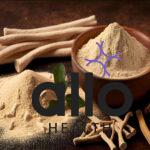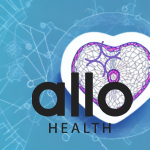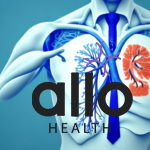What You Need to Know About Prilox Cream

Allo Health is dedicated to personalized well-being, offering support and trusted information tailored to individual health goals. The platform emphasizes human-generated content, led by a distinguished medical team of experts, including physicians and sexual health specialists. Their commitment to credibility involves rigorous fact-checking, authoritative research, and continuous updates to ensure accurate, up-to-date information. Allo Health's unique approach goes beyond conventional platforms, providing expert-led insights and a continuous commitment to excellence, with user feedback playing a crucial role in shaping the platform's authoritative voice.

Ms Rachel graduated with a MSc. in clinical psychology from CMR university, Bangalore. With close to two years of experience in the field of Child and Adolescent Psychology.
Why This Was Upated?
Our experts continually monitor the health and wellness space, and we update our articles when new information became available.
Updated on 03 November, 2023
- Article was updated as part of our commitment to diversity, equity, and inclusion.
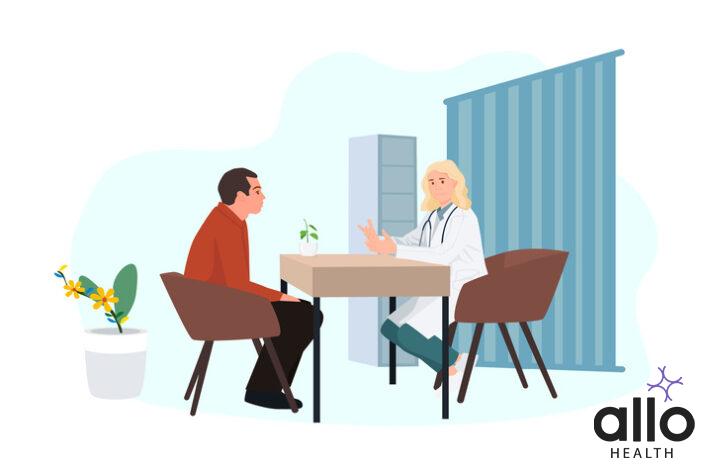
"The following blog article provides information about a drug or brand name drug and its potential effects or benefits. However, it is crucial to understand that this information is intended for general educational purposes only and should not be considered a substitute for professional medical consultation. It is highly recommended to consult with a qualified healthcare professional before making any decisions regarding medication, treatment, or healthcare management.
Book consultation
Individuals have unique medical conditions, and the information provided in this article may not be applicable to everyone. Only a qualified healthcare provider can evaluate your specific medical situation, taking into account your medical history, conducting appropriate tests, and providing personalized advice and recommendations. They are equipped to make informed decisions tailored to your individual needs.
It is crucial to emphasize that self-diagnosis, self-medication, or disregarding medical advice can have serious health consequences. This article may reference specific brand names or drugs for illustrative purposes. Mention of these names does not imply endorsement, recommendation, or guarantee of their efficacy or safety. The choice of medication should be based on discussions and individualized guidance from a healthcare professional who has a comprehensive understanding of your medical condition.
"If you’re someone who often experiences pain, discomfort, or has to undergo medical procedures frequently, Prilox cream may be a solution to alleviate some of that discomfort.
In this article, we’ll be exploring what Prilox cream is, how it works, its benefits and uses, how to apply it, its potential side effects, and important precautions to keep in mind.
What is Prilox Cream?
- Prilox cream is a topical anaesthetic cream that is mainly used for causing temporary numbness (loss of pain sensation) of the normal intact skin/unbroken skin before needle insertion, alleviating pain and discomfort.
- It is a combination of two primary local anesthetic medicines: lidocaine and prilocaine.
These two ingredients work together to numb the skin and provide temporary relief from pain and discomfort and is used before minor surgical procedures. - Prilox cream is commonly used for various medical procedures such as needle insertion, minor skin surgeries, and dental procedures.
- It is also used to relieve the pain associated with skin conditions like sunburn, insect bites, and rashes.
Key Ingredients in Prilox Cream
As mentioned earlier, the two primary ingredients in this cream are lidocaine and prilocaine.
- Lidocaine is a local anaesthetic that works by blocking the nerve signals that send pain to the brain.
- Prilocaine is another local anaesthetic that has a similar effect to lidocaine but is often used in combination with lidocaine to increase its effectiveness.
- In addition to these two primary ingredients, Prilox cream also contains other inactive ingredients such as carbomer, sodium hydroxide, and purified water.
- These ingredients help to stabilize the cream and ensure that it is safe for use.
How Does Prilox Cream Work?
- Prilox cream works by numbing the skin in the area where it is applied.
- This numbing effect helps to alleviate pain and discomfort.
- When applied correctly, the cream can provide temporary relief for up to two hours.
- The duration of the numbing effect may vary depending on the amount of cream used, the area of application, and the individual’s sensitivity to the ingredients.
- These creams should only be used as directed by a healthcare professional.
- Overuse or misuse of the cream can lead to serious side effects such as skin irritation, allergic reactions, and even seizures.
- Avoid accidental contact with eyes, mouth, nose, anus, mucous membrane or damaged skin surfaces.
- If you are breast feeding, seek medical advice before use.
- It’s effective topical anaesthetic that can provide temporary relief from pain and discomfort. It is widely used in medical procedures and for various skin conditions.
- However, talk to a doctor before application and seek guidance if any adverse reactions occur.
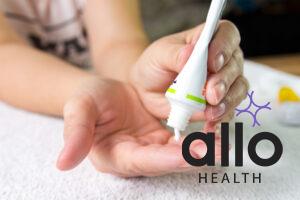
Benefits and Uses of Prilox Cream
Pain Relief
- The primary use of the cream is to reduce pain sensation.
- It can be useful in cases where pain and discomfort occur due to minor cuts, bruises, burns, insect bites, or other similar injuries.
- The cream works by blocking the signals of pain from the affected area to the brain, which helps to reduce the sensation of pain.
- Prilox cream can also help to reduce inflammation and swelling in the affected area. This can help to speed up the healing process and reduce the risk of infection.
Numbing Effect for Medical Procedures
- This cream is also used in many medical procedures that may cause discomfort or pain.
- For example, it is commonly used by tattoo artists to numb the skin before tattooing.
- This can help to reduce the pain and discomfort associated with the procedure, making it more tolerable for the patient.
- Dental procedures, such as filling cavities or root canals, also often use the cream to numb the area. This can help to reduce the pain and discomfort associated with these procedures, making them more comfortable for the patient.
Treating Skin Conditions
- In some cases, Prilox cream can also be useful in treating certain skin conditions.
- For example, it may be used to alleviate the pain associated with certain skin conditions such as itchy skin, skin rash, eczema, psoriasis, or atopic dermatitis.
- However, it is important to note that Prilox cream should never be used to treat a skin condition without the guidance of a healthcare professional.
- When using this to treat a skin condition, do so under medical supervision, seeking the guidance of a health professional.
- This will help to ensure that you use the cream safely and effectively, and avoid any potential side effects.
Treating Premature Ejaculation
- Lidocaine and Prilocaine are two potent local anesthetics strategically employed to diminish sensitivity in specific areas of the penis.
- By reducing this sensitivity, they play a crucial role in delaying ejaculation during sexual intercourse, providing a viable solution for those dealing with premature ejaculation.
How to Apply Prilox Cream
Preparing the Skin
- Before applying Prilox cream, the skin should be thoroughly cleaned with soap and water.
- This will help to remove any dirt or bacteria that may be present on the skin.
- It is important to dry the area completely before applying the cream, as any moisture on the skin can prevent the cream from being absorbed properly.
- If the affected area is particularly dirty or oily, it may be beneficial to use a gentle exfoliating scrub to remove any excess dirt or dead skin cells.
- This can help to improve the effectiveness of the cream and ensure that it is able to penetrate deeply into the skin.
Applying the Cream
- When applying the cream, use a thin layer. Using too much cream can actually reduce its effectiveness, as the skin may not be able to absorb it all.
- Start by applying a small amount of cream to the affected area, then gently rub it in using circular motions.
- Be sure to cover the entire affected area with the cream, but avoid applying it too close to the eyes, nose, or mouth.
- If you accidentally get cream in these areas, be sure to rinse them thoroughly with water.
- It may take a few minutes for the cream to be fully absorbed into the skin.
- During this time, it is important to avoid touching the affected area, as this can cause the cream to rub off.
Post-Application Care
- After applying the cream, take good care of the affected area to ensure that it heals properly.
- Avoid touching the area as much as possible, as this can cause the cream to rub off and reduce its effectiveness.
- If the affected area is on a part of the body that is exposed to the sun, be sure to cover it with clothing or use a sunscreen to protect it from UV rays.
- This can help to prevent further damage to the skin and promote faster healing.
- If you experience any side effects after using the cream, such as redness, itching, or swelling, be sure to contact your doctor right away.
- These symptoms may indicate an allergic reaction or other serious condition that requires medical attention.
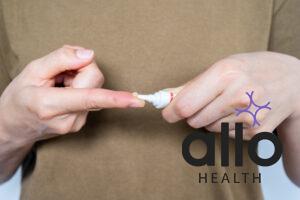
Side Effects and Precautions
Common Side Effects
- Like any medication, Prilox cream can have side effects. Some common side effects of Prilox cream include application site reactions such as mild redness, minor burning, pale skin or swelling. These side effects are generally mild and go away on their own after a short period of time.
- These side effects are not experienced by everyone who uses Prilox cream. In fact, many people use this cream without experiencing any side effects at all.
- If you do experience any side effects, it is important to speak with your doctor or pharmacist to determine the best course of action.
Serious Side Effects
- Although rare, Prilox cream can also cause serious side effects. These can include difficulty breathing, a rash or hives, or swelling of the face or mouth. If you experience any of these side effects, seek medical attention immediately.
- These serious side effects are very rare and are typically only experienced by a small percentage of people who use Prilox cream.
- It is important to be aware of these potential side effects and to seek medical attention from a medical professional if you experience any of them.
When to Consult a Doctor
- If you experience any allergic reactions, severe or ongoing side effects, or have any concerns about the use of Prilox cream, consult with your doctor.
- They will be able to provide you with guidance and advice specific to your needs.
- Prilox cream should only be used as directed by your doctor or pharmacist.
- If you have any questions or concerns about the use of Prilox cream, do not hesitate to speak with your healthcare provider.
- Additionally, it is important to always read the label and follow the instructions provided with the medication. This will help ensure that you are using the medication safely and effectively.
Key Takeaways
- Prilox cream is a topical anaesthetic used to alleviate pain and discomfort by causing loss of sensation of the skin at the site of application.
- It is combination medicine containing lidocaine, and prilocaine, which work together to block pain signals.
- Prilox cream is used for various medical procedures, such as needle insertion and minor skin surgeries, and can provide relief from skin conditions like sunburn, insect bites, and rashes.
- When applying the cream, use a thin layer and avoid accidental exposure with irritated skin or broken skin surfaces.
- Common side effects may include application site reactions such as mild redness, pale skin, or swelling but major adverse effects are rare.
- Seek medical attention immediately if you experience difficulty breathing, rash, hives, or swelling after using the cream.
- Follow the instructions provided with the medication and store it in a safe place, away from children and pets.
Frequently Asked Questions
Q: What is Prilox cream?
A: Prilox cream is a topical anaesthetic medication used to provide temporary numbness to the skin, reducing pain and discomfort. It is a combination of two local anaesthetics, lidocaine and prilocaine.
Q: How long does the numbing effect of Prilox cream last?
A: The numbing effect can last for up to two hours, depending on the amount of cream used and the area of application.
Q: Are there any side effects of using Prilox cream?
A: Common side effects may include mild redness, pale skin, or swelling at the application site. Serious side effects are rare, but if you experience difficulty breathing, rash, hives, or swelling, seek medical attention immediately.
Q: Is it safe to use Prilox on sensitive areas of the body?
A: Prilox can be used on sensitive areas, but it should be done under the guidance of a healthcare provider. They will determine the appropriate dosage and application method to ensure safety and effectiveness.
Q: Can Prilox be used for premature ejaculation?
A: Yes, Prilox is sometimes used to treat premature ejaculation. By reducing penile sensitivity, it can help delay ejaculation during sexual intercourse. However, it’s important to consult a healthcare professional before using Prilox for this purpose.

